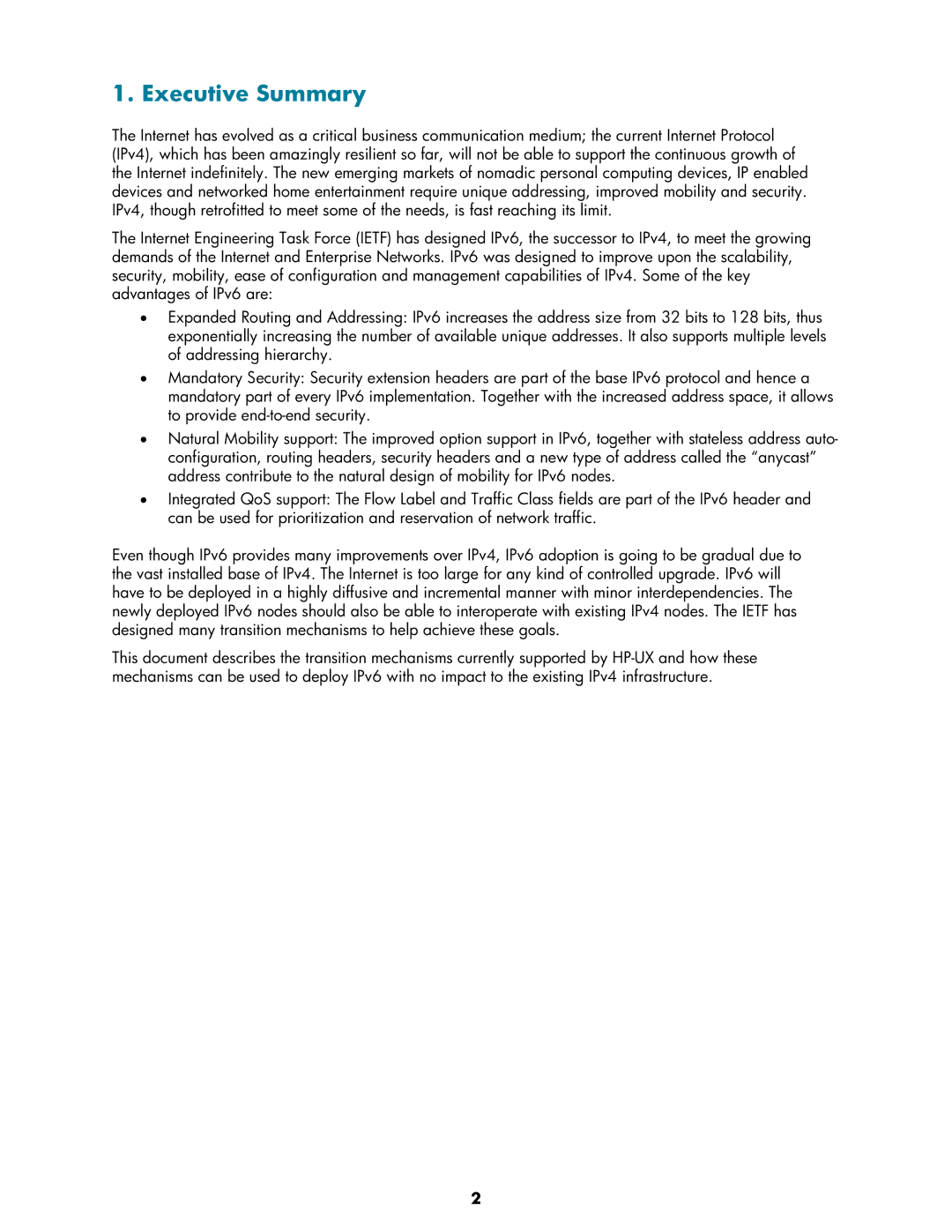1. Executive Summary
The Internet has evolved as a critical business communication medium; the current Internet Protocol (IPv4), which has been amazingly resilient so far, will not be able to support the continuous growth of the Internet indefinitely. The new emerging markets of nomadic personal computing devices, IP enabled devices and networked home entertainment require unique addressing, improved mobility and security. IPv4, though retrofitted to meet some of the needs, is fast reaching its limit.
The Internet Engineering Task Force (IETF) has designed IPv6, the successor to IPv4, to meet the growing demands of the Internet and Enterprise Networks. IPv6 was designed to improve upon the scalability, security, mobility, ease of configuration and management capabilities of IPv4. Some of the key advantages of IPv6 are:
•Expanded Routing and Addressing: IPv6 increases the address size from 32 bits to 128 bits, thus exponentially increasing the number of available unique addresses. It also supports multiple levels of addressing hierarchy.
•Mandatory Security: Security extension headers are part of the base IPv6 protocol and hence a mandatory part of every IPv6 implementation. Together with the increased address space, it allows to provide
•Natural Mobility support: The improved option support in IPv6, together with stateless address auto- configuration, routing headers, security headers and a new type of address called the “anycast” address contribute to the natural design of mobility for IPv6 nodes.
•Integrated QoS support: The Flow Label and Traffic Class fields are part of the IPv6 header and can be used for prioritization and reservation of network traffic.
Even though IPv6 provides many improvements over IPv4, IPv6 adoption is going to be gradual due to the vast installed base of IPv4. The Internet is too large for any kind of controlled upgrade. IPv6 will have to be deployed in a highly diffusive and incremental manner with minor interdependencies. The newly deployed IPv6 nodes should also be able to interoperate with existing IPv4 nodes. The IETF has designed many transition mechanisms to help achieve these goals.
This document describes the transition mechanisms currently supported by
2
